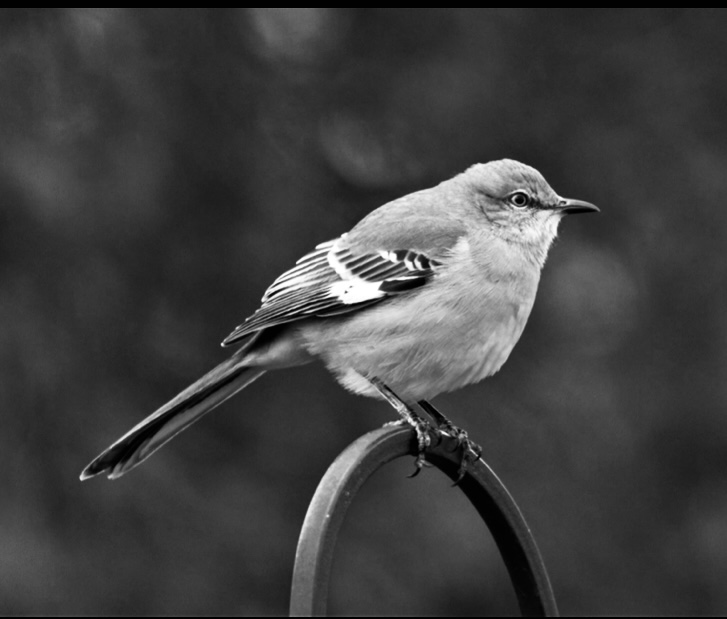
NORTHERN MOCKINGBIRDS
Now common in our area, Northern Mockingbirds are widely known for their singing ability. Mockingbirds sing to establish their territory and attract mates. Their songs have a series of phrases that are repeated two to six times. They can incorporate other sounds into their songs, often imitating other songbirds but sometimes frogs and dogs. On a warm summer night unmated male mockingbirds fill the air with their songs. Mockingbirds sometimes sing during late fall and winter for reasons still being studied.
Mockingbirds have been videoed mimicking car alarms and emergency sirens making them very unpopular to the residents of those neighborhoods. You can see some of these videos on YouTube.
Mockingbirds have gray-brown feathering on their heads and backs, with pale undersides and long tails that stick out while flying. Each of their somewhat short wings has two white bars and white patches that can be seen on the wing while the birds are in flight. They have long, thin black bills that curve slightly downward. Mockingbirds are a medium-sized song bird. Adults are 8.3-10.2 inches long, with a wingspan of 12.2-13.8 inches. Generally, they weigh around 1.6 to 2 ounces.
Juvenile’s bellies can be heavily spotted with pale edging giving their back and head a streaked appearance.
Northern Mockingbirds prefer open areas, such as forest edges, parks and suburban backyards. They can be found year-round throughout the United States and Caribbean, Southern Canada, Mexico and Central America. Some individuals in the northern part of their range will migrate south if the weather gets too extreme.
Mockingbirds live alone through much of the year, but males and females pair up during the breeding season. Both birds can be fiercely territorial and will chase off a wide variety of intruders. Northern Mockingbirds aggressively defend their nest and are known to attack and mob potential predators including people that approach too close. Northern Mockingbirds have been known to identify individual people who repeatedly encroach into their nesting territory and will selectively harass them.
I will write about mockingbirds mating in more detail in the early spring as mating season approaches.
Northern mockingbirds eat mainly insects in the summer, but occasionally crustaceans and small lizards depending on the region. In winter, they eat berries and fruits, including ones found in backyard gardens. They scout out their foraging area from an above-ground perch and will descend as low as the ground when the coast is clear to look for food.
In the winter mockingbirds are very protective of food within their territory even if they don’t eat it themselves. I have watched them eat peanut butter off the logs meant for woodpeckers, but in my garden their favorite food seems to be apples. Mockingbirds will chase away smaller birds from seed feeders that I have never witnessed them eating themselves.
In order to help these smaller often colorful birds, I place the apple away from the rest of the feeders. This draws the mockingbirds away but now their main competition for the apple will be Starlings that comes in flocks for this fresh fruit snack and of course squirrels.
Information gathered from The Birders handbook, Ehrlich, Doblin & Wheye, Smithsonian and National Geographic.
Happy New Year,
James
